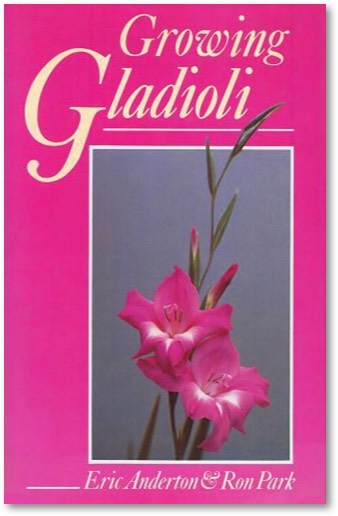
Musings » Growing Gladioli


Portland, Oregon
Timber Press 1989
As I continue my march through the flowers, this time it is the gladiolus’ turn in 600 words or less. That puts a chap on her mettle but it is at least better than the 80 words an earlier Gazette editor once allotted me.
The gladiolus occurs in much of the temperate world and by the late 1500s one or two of the relatively accessible Southeastern European flowers were known in England. Linnaeus named it gladiolus because the tall tapered leaved resembled a sword, gladius in Latin. The light pink flowers were borne on a tall stiff stem, branching off alternately.
It was only when the riches of the southern tip of Africa became available did the gladiolus emerge in greater complexity. Two significant episodes stand out. In 1837 Hermann Bedinghaus, the Duc d’Enghien’s gardener in Brussels, released his Gandavensis hybrid. This turned out to be a true floral workhorse. (sorry for the mixed metaphor) For the rest of the 19th century almost all the wonderful new varieties descended from that one.
The other event was Queen Victoria’s visit to Napoleon III ‘s chateau of Fontainebleau in 1860. He too had a stellar gardener, M. Eugène Souchet. Souchet also crossed different species of gladiolus to introduce new cultivars. He arranged vases of his exciting new flowers along the edges of the Fontainebleau borders and the queen fell deeply in love. In those days all it took to ignite a trend was for the queen to murmur approving noises about something. Anderton and Park open their extremely useful book with much of this history, laying out where the flower has been and thus where it could be going. One of the most important quests in flower breeding is for a wider range of color to increase its commercial appeal. There was rejoicing when another new species was found near the Victoria Falls in former Tanganyika just before the first World War. It was a delicate yellow color, Gladiolus primulinus, a useful contribution to the color palette.
We take it for granted that we can buy a bunch of gladioli even at a supermarket and get pink, mauve, light red, deep red, orange, yellow and snowy white as a matter of course. Every one of these represents a triumph for someone, usually unsung to the general public.
One way in which they did get rewards was through the competitions. Gladiolus societies sprang up rapidly, just like rose societies and geranium societies earlier. All the major European flower producing countries held local, regional and national exhibitions every year and once the United States caught up the same thing happened there. Canada excelled in developing gladioli. One of the principal foci of this book is how to grow gladioli for competition as distinct from simply having a beautiful garden.
Both the authors come from the organized gladiolus world and Eric Anderton is a prize winner many times over. Ron Park meticulously collects pictures of the flower, many of them going back to the turn of the 20th century. Each page has a rather wide margin and the elegant line drawings are placed vertically in a margin, emphasizing the key quality of this flower. A really useful feature is chapter 9, recommendations of varieties for different purposes. When one is confronted with too much choice it is bewildering and ultimately not useful. The help is very welcome.

